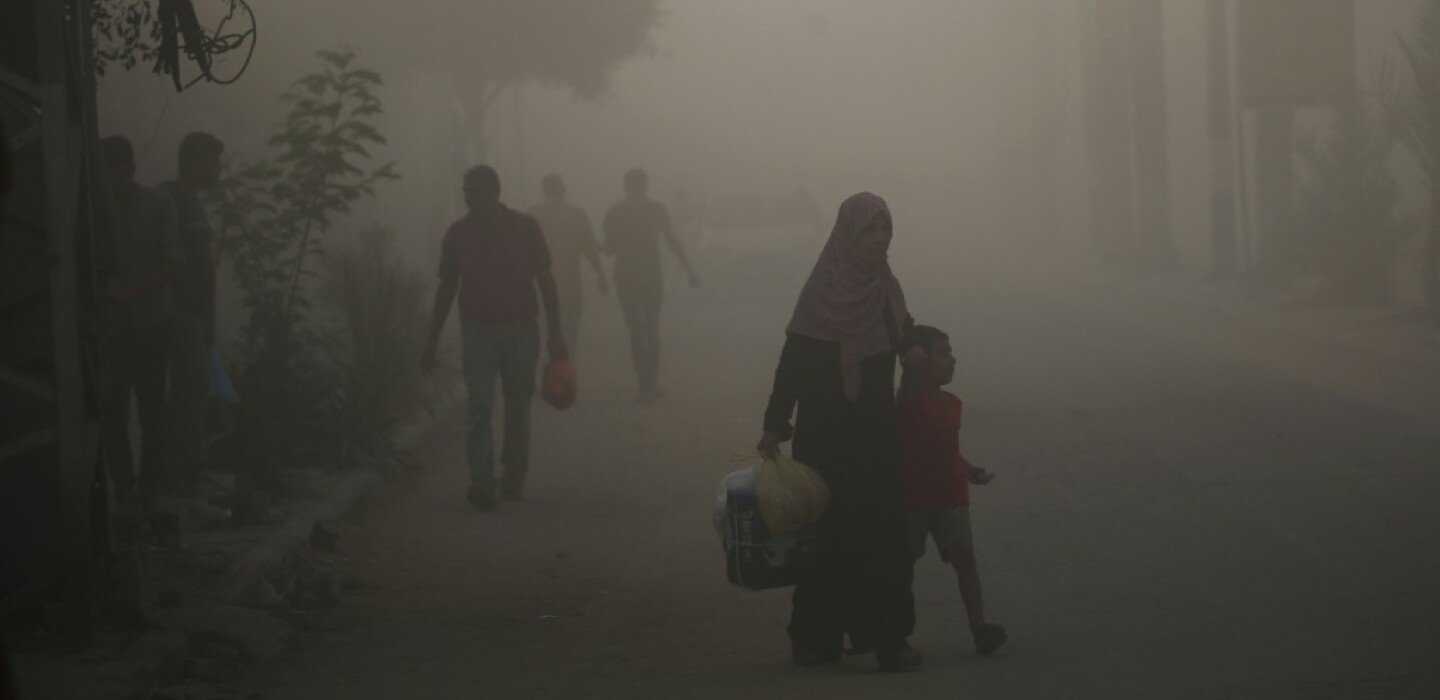Washington reported on Friday, August 23, “progress” during discussions in Cairo for a cease-fire in the Gaza Strip related to the release of hostages, at a time when the war between Israel and Hamas is still in its infancy . US President Joe Biden, who is pushing for a ceasefire deal, spoke by phone with the leaders of the two Arab countries acting as mediators in the talks, Egyptian President Abdel Fattah al-Sissi and the Emir of Qatar, Sheikh Tamim bin Hamad Al – Thani.
The heads of Mossad (Israel’s foreign intelligence service), David Barnea, and Shin Bet (internal security), Ronen Bar, are taking part in the talks, a week after an earlier round of talks in Doha with US, Qatari and Egyptian mediators. According to Israeli Prime Minister Benjamin Netanyahu’s office, they are in Cairo “to promote an agreement to (release) the hostages” who were kidnapped and taken to Gaza during an unprecedented attack by the Islamist movement Hamas on October 7 on Israeli soil , which started the war in the Palestinian territory.
Hamas absent. CIA Director William Burns and White House Middle East Coordinator Brett McGurk are also present, while Hamas is not participating, as in Doha. “Progress has been made. We now need both sides to come together and work to get an agreement in place,” White House National Security Council spokesman John Kirby said, claiming that reports that the discussions were ” near failure” were inaccurate.
According to him, the discussions that began on Thursday are of a “constructive nature” and he hoped to see this dynamic “continue” over the “next two days”. According to an Egyptian source close to the negotiations, the heads of the Egyptian and Qatari intelligence services are also participating in the discussions. According to this source, an “extended” round of talks will begin on Sunday. She presents it as “a decisive step for the design of an agreement”, without giving further details.
“Bridged the gap”. “Washington is discussing new proposals with the mediators to build a bridge between Israel and Hamas,” this Egyptian source emphasizes. An Islamist movement official, Hossam Badran, told AFP on Friday that Mr Netanyahu’s insistence that his troops remain in a strip along the Gaza-Egypt border, called the Philadelphia Corridor, reflected “his refusal to reach to a final agreement”. Hamas will accept “nothing less than the withdrawal of the occupying forces (from Gaza), including Philadelphia,” he said.
Mr. Netanyahu says he is determined to keep Israeli troops in the strip of land they took control of in May “to prevent a rearmament of Hamas,” according to his office. The Islamist movement insists on the application, as it stands, of a plan announced on May 31 by Joe Biden, which he had accepted. This provided for a six-week ceasefire accompanied by an Israeli withdrawal from densely populated areas of Gaza and the release of hostages, then, in a second phase, a total Israeli withdrawal from the territory.
Battle in Gaza. “I hope these talks (…) will lead to solutions” and “that the war will stop,” Oumm Mouhammad Wadi, a Gazan who is “tired” of the situation, told AFP. Fighting raged again on Friday, with witnesses and AFP journalists reporting Israeli artillery fire and ground clashes in the center and south of the territory.
An Israeli bombardment of a house in western Khan Yunis (south) overnight killed eleven people, including four women and four children, and wounded a number of others, Gaza’s civil defense said early Saturday. The Israeli military said that over the past 24 hours, Israeli troops had “eliminated dozens of terrorists and dismantled dozens of terrorist infrastructure facilities” in several areas.
Avoid escalation. The war has displaced nearly the entire population of Gaza, often repeatedly, depriving them of shelter, clean water and other essential goods, while spreading disease, according to the UN. For the United States, a cease-fire in Gaza will help avoid a military escalation in the Middle East, where Iran and its allies – Hamas and the Lebanese Hezbollah – accuse Israel of murdering at the end of July in Tehran, former Hamas leader, Ismaïl Haniyeh , and threatens. to retaliate.
Israel is also under pressure on its northern border, where it has exchanged daily fire for more than ten months with Hezbollah, which opened a front against it in support of Hamas. On Friday, seven Hezbollah fighters, according to the Islamist movement, and one child, according to the Lebanese Ministry of Health, were killed in Israeli attacks on southern Lebanon.
Heavy tolls. The war began on October 7 when Hamas commandos carried out an unprecedented attack on Israeli soil that left 1,199 people dead, mostly civilians, according to an AFP tally from official Israeli data. Out of 251 people kidnapped that day, 105 are still being held in Gaza, of which 34 were declared dead by the army.
Israel has vowed to destroy Hamas, which seized power in Gaza in 2007 and which it considers terrorists, as do the US and the EU. In response to the attack, its army launched a major offensive in the Palestinian territory that left at least 40,265 dead, according to the Hamas government’s health ministry, which did not detail the number of civilians and fighters killed. According to the UN, most of the dead are women and minors.
© Agence France-Presse
